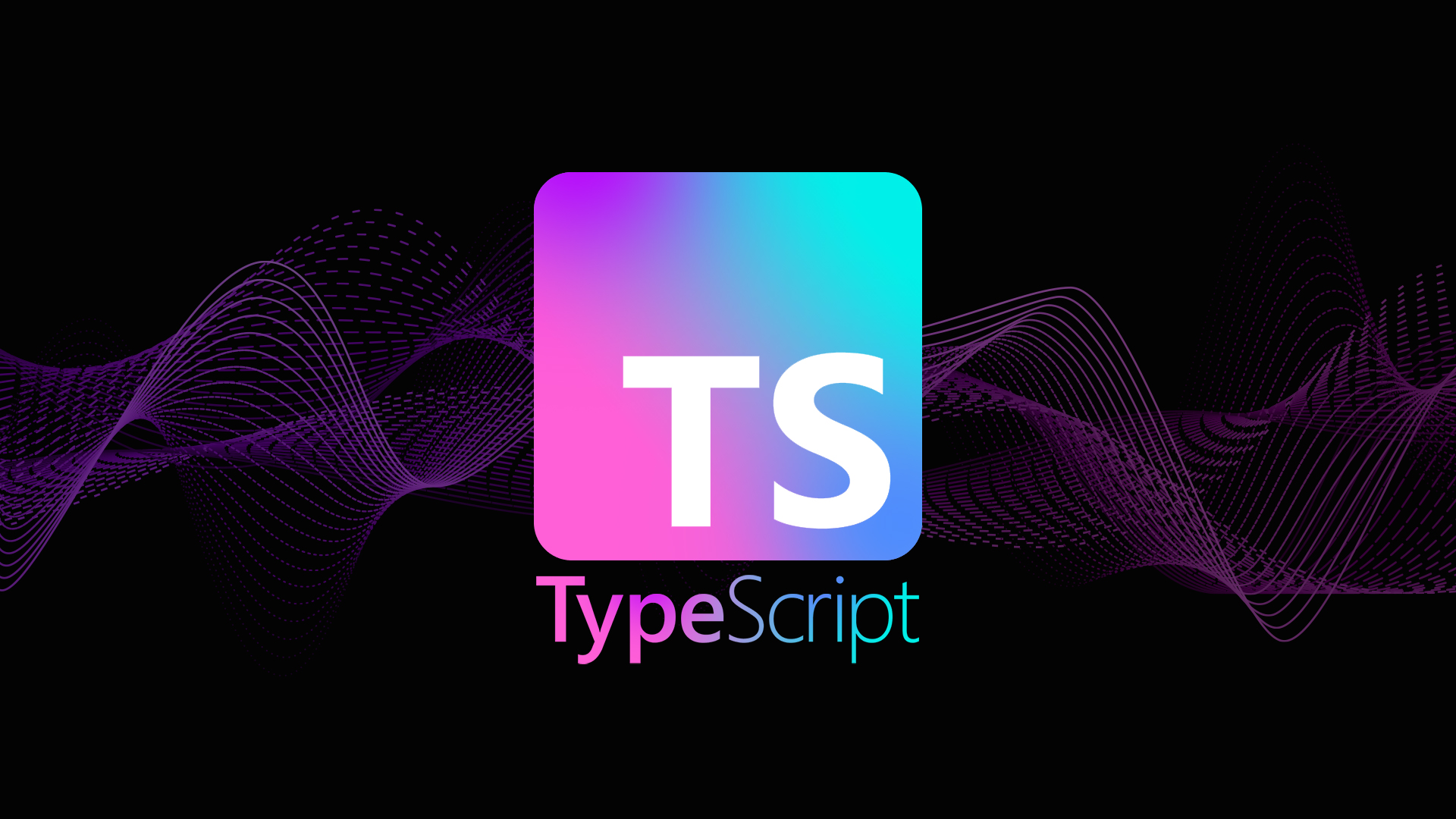TypeScript is an open-source programming language developed and maintained by Microsoft. It is a superset of JavaScript, meaning that any valid JavaScript code is also valid TypeScript code. However, TypeScript extends JavaScript by adding static typing, interfaces, and other powerful features designed to make large-scale software development more efficient, reliable, and maintainable. The primary purpose of TypeScript is to provide developers with the tools and structure necessary to build complex applications with fewer errors and greater clarity.
Since its release in 2012, TypeScript has grown into one of the most popular languages in the web development ecosystem. It bridges the gap between the flexibility of JavaScript and the structure of statically typed languages such as Java or C#. This balance allows developers to write expressive and safe code while maintaining compatibility with existing JavaScript projects and libraries. TypeScript compiles down to plain JavaScript, making it runnable in any browser, Node.js environment, or JavaScript engine.
TypeScript is not meant to replace JavaScript; instead, it enhances it. By providing a type system and development tools such as autocompletion, refactoring, and compile-time checking, TypeScript improves developer productivity and reduces runtime errors. The result is code that is easier to understand, test, and maintain, especially in large, collaborative projects.
The Origins and Evolution of TypeScript
The development of TypeScript began at Microsoft under the leadership of Anders Hejlsberg, the architect behind C# and Turbo Pascal. The language was introduced publicly in 2012 as a response to the growing complexity of JavaScript applications. As web development evolved, developers began building massive, feature-rich applications using JavaScript. While JavaScript’s dynamic nature made it flexible and accessible, it also introduced significant challenges when managing large codebases. Developers faced frequent issues with runtime errors, lack of tooling support, and difficulty in maintaining type safety.
TypeScript was designed to solve these problems by introducing static typing to JavaScript. Static typing allows errors to be caught during development rather than at runtime. This approach aligns with practices in other mature programming languages, providing a more predictable and robust development process. Microsoft’s goal was not to replace JavaScript but to provide an optional layer of type safety that compiles seamlessly into standard JavaScript.
Over the years, TypeScript has evolved rapidly. Its early versions were primarily focused on type checking and basic tooling support. However, subsequent releases added advanced features such as union and intersection types, decorators, generics, and type inference. TypeScript has also kept pace with the evolution of JavaScript itself, supporting all ECMAScript (ES) features as they are standardized. This tight integration ensures that TypeScript remains fully compatible with the broader JavaScript ecosystem.
Today, TypeScript powers many of the world’s largest and most complex web applications. Major companies such as Microsoft, Google, Slack, Airbnb, and Asana rely on TypeScript to manage their frontend and backend codebases. The language’s strong ecosystem, robust tooling, and active community have established it as a cornerstone of modern software development.
The Relationship Between TypeScript and JavaScript
TypeScript’s most defining characteristic is its relationship with JavaScript. It was intentionally designed to build upon JavaScript rather than replace it. This approach ensures that TypeScript developers can leverage the vast ecosystem of existing JavaScript code, libraries, and frameworks without compatibility issues.
At its core, TypeScript is JavaScript with additional syntax for types. When a developer writes TypeScript code, the TypeScript compiler (tsc) transpiles it into JavaScript. This compiled output can run anywhere JavaScript runs, whether in a web browser, Node.js, or a mobile environment like React Native. The compilation step effectively strips away the TypeScript-specific syntax, leaving behind optimized JavaScript that is ready for execution.
Because TypeScript is a superset, developers can start using it incrementally. A JavaScript file can be renamed with a .ts extension, and the developer can begin adding type annotations gradually. This flexibility makes it easy to adopt TypeScript in existing projects without rewriting everything from scratch. Over time, more advanced type features can be introduced to improve safety and maintainability.
One of TypeScript’s guiding principles is that all JavaScript is valid TypeScript. This ensures that the learning curve remains manageable for developers already familiar with JavaScript. The language also follows JavaScript’s runtime semantics exactly. This means that while TypeScript enforces type checking at compile time, it does not alter how code executes at runtime. The resulting JavaScript behaves exactly as if it were written by hand, maintaining the dynamic nature of the language while providing stronger development guarantees.
The Importance of Static Typing
Static typing is the cornerstone of TypeScript’s design philosophy. In a dynamically typed language like JavaScript, variable types are determined at runtime, meaning errors caused by incorrect types are often discovered only when the code is executed. This can lead to subtle and difficult-to-debug issues, especially in large codebases or collaborative environments.
TypeScript’s static type system allows developers to define the expected types of variables, parameters, and return values at compile time. This enables the compiler to detect type-related errors before the code is ever run. For example, if a function expects a string but receives a number, TypeScript will generate a compile-time error, alerting the developer immediately.
Beyond error detection, static typing also improves code readability and maintainability. When a variable’s type is explicitly declared, the purpose of that variable becomes clearer to anyone reading the code. This self-documenting nature of TypeScript helps teams collaborate more effectively and reduces the likelihood of misunderstanding a function’s intent.
TypeScript’s type system is both powerful and flexible. It supports explicit type declarations, type inference (where the compiler deduces the type automatically), and advanced constructs such as union types, intersection types, and generics. These features allow developers to describe complex relationships between data structures while maintaining type safety.
Furthermore, the static type system enables better tooling. Editors and IDEs can provide advanced features such as autocompletion, real-time error detection, and intelligent code navigation based on type information. This tight integration between language and tooling is one of the key reasons for TypeScript’s widespread adoption.
Core Features of TypeScript
TypeScript introduces a range of features that enhance JavaScript’s expressiveness and robustness. These features aim to make development faster, safer, and more predictable without sacrificing flexibility.
One of the most important features is type annotations, which allow developers to specify the types of variables, function parameters, and return values. TypeScript’s type inference system is sophisticated enough that explicit annotations are often unnecessary, but when used, they provide additional clarity.
Another crucial feature is interfaces. Interfaces define the structure that an object must follow, ensuring consistency across different parts of a program. They are particularly useful in large codebases where multiple developers work on interconnected modules. By defining an interface, TypeScript ensures that objects adhere to expected contracts, reducing the chance of runtime errors.
Classes and inheritance are also central to TypeScript’s object-oriented programming capabilities. Although JavaScript introduced classes in ES6, TypeScript extends them with additional modifiers such as public, private, and protected, as well as support for abstract classes and interfaces. These features make it easier to design modular and reusable code components.
Generics in TypeScript allow developers to write flexible and reusable code that works with different types without sacrificing type safety. Generics are widely used in collections, utility functions, and frameworks to create adaptable yet strongly typed structures.
TypeScript also includes modules and namespaces, which help organize code into logical units. Modules enable developers to split code across multiple files and import only what is needed, improving maintainability and clarity.
Another advanced feature is decorators, which provide a way to modify classes and their members at design time. Decorators are often used in frameworks like Angular for dependency injection and metadata handling, enabling powerful patterns for scalable application design.
Type Inference and Type Checking
TypeScript’s ability to infer types automatically is one of its most practical features. When a developer declares a variable and assigns it a value, TypeScript can infer the type from the context. For instance, if a variable is initialized with a string, TypeScript automatically treats it as a string throughout its lifetime, preventing accidental type mismatches.
Type inference reduces the verbosity of code while maintaining the benefits of static typing. It allows developers to write code that feels as fluid as JavaScript but with the added safety of a type system. However, developers can still use explicit type annotations when necessary, such as in complex functions or APIs where clarity is critical.
The type checker is the core component of the TypeScript compiler. It validates that all variables and expressions conform to their declared or inferred types. When inconsistencies are detected, the compiler produces detailed error messages that guide developers toward the issue. This immediate feedback loop prevents many common bugs from reaching production.
TypeScript also offers strict mode, which enforces additional type safety rules. When enabled, strict mode introduces stricter checks for null and undefined values, function parameters, and type compatibility. This mode helps developers write more predictable and error-resistant code.
Integration with Modern JavaScript and ECMAScript
TypeScript is closely aligned with the ECMAScript standard, which defines the specifications for JavaScript. It supports all modern ECMAScript features, including arrow functions, async/await, destructuring, and template literals. In many cases, TypeScript provides support for upcoming ECMAScript features before they are fully adopted by browsers or Node.js, allowing developers to use cutting-edge syntax today.
The TypeScript compiler can target different versions of ECMAScript by using the --target option. For example, developers can compile TypeScript code down to ES5 for compatibility with older browsers or to ES2020 for modern environments. This flexibility makes TypeScript suitable for a wide range of applications, from legacy projects to cutting-edge web applications.
Because TypeScript transpiles to standard JavaScript, it seamlessly integrates with existing frameworks and libraries such as React, Angular, Vue, and Node.js. Most modern frameworks provide first-class support for TypeScript, offering type definitions and tooling that enhance the developer experience. The TypeScript compiler also integrates with build tools such as Webpack, Babel, and Vite, making it easy to incorporate into complex development workflows.
The TypeScript Compiler and Tooling Ecosystem
The TypeScript compiler (tsc) is the core tool that transforms TypeScript code into JavaScript. It performs syntax analysis, type checking, and code generation. The compiler can be configured using a tsconfig.json file, which defines options such as the output directory, target ECMAScript version, and whether to include or exclude specific files. This configuration file makes it easy to manage large projects and ensure consistent compilation settings across teams.
One of the reasons for TypeScript’s success is its robust tooling ecosystem. Integrated development environments (IDEs) like Visual Studio Code, WebStorm, and Sublime Text offer deep TypeScript integration. These tools provide real-time type checking, code navigation, refactoring support, and intelligent suggestions based on type information. Visual Studio Code, developed by Microsoft, has particularly strong TypeScript support, offering seamless integration with the compiler and language services.
The DefinitelyTyped project plays a crucial role in TypeScript’s ecosystem. It is a massive repository of type definitions for popular JavaScript libraries. Through the @types packages, developers can use libraries that were originally written in JavaScript with full type safety and autocompletion. This compatibility layer bridges the gap between TypeScript and the broader JavaScript world.
Benefits of Using TypeScript
TypeScript offers a range of benefits that make it a compelling choice for modern software development. One of the primary advantages is early error detection. Because the compiler checks for type mismatches and syntax errors during development, many potential bugs are caught before the code runs. This reduces debugging time and improves code reliability.
Another major benefit is enhanced developer productivity. The combination of static types, rich editor support, and intelligent autocompletion allows developers to write code faster and with greater confidence. Refactoring becomes safer and easier since the compiler ensures that changes do not break type contracts elsewhere in the codebase.
TypeScript also promotes scalability. As projects grow, maintaining JavaScript code can become difficult due to its dynamic nature. TypeScript introduces structure through types, interfaces, and modules, making large applications more manageable. Teams can define clear contracts between components, ensuring consistent communication and reducing integration issues.
Improved documentation is another subtle yet powerful advantage. Type annotations serve as implicit documentation, describing how functions and data structures are intended to be used. This clarity benefits both current developers and future maintainers of the codebase.
Finally, TypeScript’s backward compatibility ensures that it can coexist with JavaScript. Developers can gradually adopt TypeScript, converting files one at a time without disrupting existing functionality. This incremental adoption path lowers the barrier to entry and encourages experimentation.
TypeScript in Frameworks and Libraries
TypeScript has become the default choice for many major web frameworks. Angular, developed by Google, was one of the first frameworks to fully embrace TypeScript. Its reliance on decorators, dependency injection, and strong typing makes TypeScript an ideal fit. React, another popular library, offers excellent TypeScript support through type definitions and modern development tools. The combination of TypeScript and React provides developers with a powerful ecosystem for building scalable user interfaces.
Vue.js, traditionally known for its JavaScript flexibility, also offers robust TypeScript support in its latest versions. The Vue 3 composition API was designed with TypeScript integration in mind, allowing developers to take advantage of type inference and IDE support without sacrificing Vue’s simplicity.
In backend development, TypeScript has gained significant traction with Node.js. Frameworks like NestJS, built entirely in TypeScript, bring strong typing and modular architecture to server-side applications. The use of TypeScript in backend environments improves reliability, especially when working with APIs, databases, and asynchronous operations.
The Role of TypeScript in Modern Development Workflows
Modern software development demands tools that enhance collaboration, maintainability, and performance. TypeScript fits perfectly into this paradigm. It integrates seamlessly with version control systems, continuous integration pipelines, and modern build tools. By providing compile-time validation, TypeScript ensures that only type-safe and syntactically correct code reaches deployment stages.
In large teams, TypeScript acts as a safeguard against human error. Strong typing ensures that changes in one part of the application do not inadvertently break functionality elsewhere. This stability is particularly valuable in enterprise environments where code longevity and consistency are critical.
TypeScript also enhances testing workflows. With clearly defined types, unit tests can focus more on logic rather than verifying data shapes. This reduces redundancy and improves test reliability. Moreover, static analysis tools such as ESLint and Prettier integrate naturally with TypeScript, maintaining code style and enforcing quality standards across the project.
Challenges and Criticisms of TypeScript
Despite its numerous advantages, TypeScript is not without challenges. One of the most common criticisms is the learning curve. Developers transitioning from JavaScript may initially find TypeScript’s type system intimidating. Understanding advanced concepts like generics, union types, and decorators requires time and practice.
Another concern is the compilation step. Unlike JavaScript, TypeScript code must be transpiled before execution. This adds an extra layer of complexity to the development process and can slow down build times in large projects. However, modern build tools and incremental compilation have mitigated this issue significantly.
Type definitions for third-party libraries can also pose challenges. While DefinitelyTyped provides comprehensive coverage, not all libraries maintain accurate or up-to-date type definitions. This can lead to type mismatches or the need for manual adjustments.
Lastly, some developers argue that TypeScript adds unnecessary overhead for small projects where dynamic typing is sufficient. In such cases, the added verbosity of type annotations may outweigh the benefits. However, TypeScript’s flexibility allows developers to use it minimally, enabling a balance between safety and simplicity.
The Future of TypeScript
The future of TypeScript looks bright. Its continued growth and adoption across industries reflect its maturity and value. The TypeScript team at Microsoft remains highly active, continuously improving the compiler’s performance, type inference, and language features. Each new release brings refinements that make the language more expressive and easier to use.
As the JavaScript language itself evolves, TypeScript will remain at the forefront of that evolution. It often serves as a testing ground for new ECMAScript proposals, providing developers with early access to upcoming language features. TypeScript’s compatibility and forward-thinking design ensure that it will remain relevant for years to come.
The rise of frameworks like Deno and Bun, which are built with TypeScript in mind, indicates a growing trend toward native TypeScript support at runtime. This could eventually reduce or eliminate the need for a separate compilation step, further streamlining development workflows.
With the increasing emphasis on developer experience, maintainability, and reliability, TypeScript’s role in software engineering will only continue to expand. It is no longer just a tool for frontend developers—it has become a foundational technology for building robust, scalable, and efficient software across the full stack.
Conclusion
TypeScript represents a significant evolution in the world of web development. By adding static typing and modern programming constructs to JavaScript, it bridges the gap between dynamic flexibility and structured reliability. It empowers developers to write cleaner, more maintainable, and more predictable code while staying fully compatible with the JavaScript ecosystem.
From its origins as a Microsoft project to its current position as an industry standard, TypeScript has transformed the way developers build software. Its combination of compile-time safety, powerful tooling, and seamless integration with existing technologies makes it one of the most influential languages of the modern era.
Ultimately, TypeScript’s success lies in its philosophy: enhancing JavaScript without replacing it. It gives developers confidence in their code, tools to build at scale, and a path toward the future of web and application development. In a world where complexity continues to grow, TypeScript provides the structure and precision necessary to meet that challenge—making it an indispensable part of today’s programming landscape.






